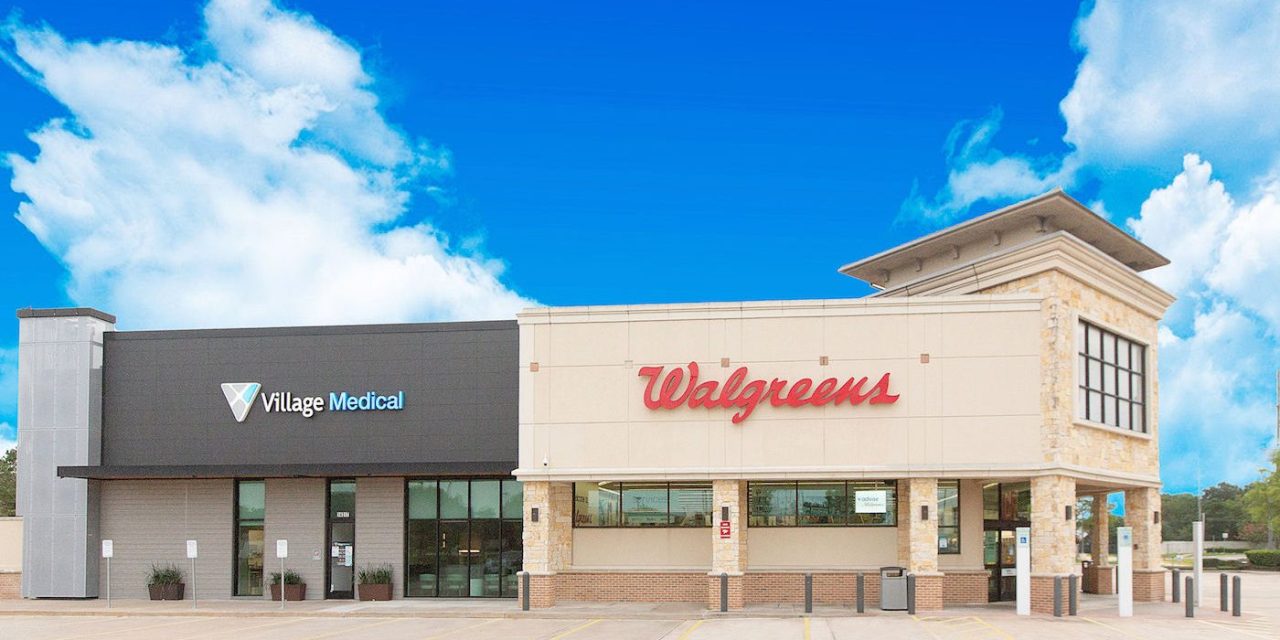Drugstores are accelerating plans to reinvent themselves as health care destinations

The coronavirus pandemic has led some drugstore chains to accelerate plans to make health care a bigger part of their business.
Companies like Walgreens Boots Alliance and CVS Health have managed to keep revenue growing during the pandemic, but they’ve also been hurt by falling sales of products in non-essential categories like beauty. Before the pandemic, these companies were trying to reinvent themselves as primary care destinations by adding more spaces in-store and online for health care products and services, beyond just refilling prescriptions. Now, the coronavirus pandemic has only made that transformation more urgent. Rather than visiting a CVS or Walgreens to pick up household goods, more people are scheduling a coronavirus test or attending a vaccine appointment.
“We will use this opportunity to shape a health experience that demonstrates the value [CVS] brings,” CVS CEO Karen Lynch said during the company’s fourth-quarter earnings call on Tuesday. She pointed to the fact that 8 million people who got a coronavirus test from CVS last year were not previously customers of CVS, according to CVS data. CVS reported that, during the quarter, total revenue was up 4.6% to $69.55 billion.
Lynch said that, in order to keep these customers coming back to CVS, the company will be investing more in digital services like improving its telehealth offerings. Meanwhile, Walgreens executives had said during an earnings call in January that they plan to accelerate a partnership with primary care chain VillageMD. Walgreens had announced last year that it would pay VillageMD $1 billion to open at least 500 primary care clinics next to Walgreens’ stores, with the hope that the clinics would drive people to Walgreens’ pharmacies. Then in January, Walgreens CEO Stefano Passina said that the two companies now hope to open 600 primary care clinics within that time frame.
Drugstores have been on a mission to reinvent themselves as primary care clinics for the past few years. CVS, for example, announced in June 2019 that it would be remodeling 1,500 of its 9,000 stores into “HealthHubs” by the end of 2021. These HealthHub stores would dedicate 20% more floor space to health and wellness products.
What had been fueling drugstore chains’ attempts at reinvention were declining front-of-store sales — that’s industry speak for retail sales drugstores derive from sales of any pharmaceutical goods like snacks and cleaning supplies. Walgreens’ retail business, for example, reported a sales drop for 12 consecutive quarters before the pandemic. While CVS and Walgreens reported a temporary increase in front-of-store sales at the beginning of the pandemic, that sales bump has since subsided for the most part. For example, CVS reported that front-of-store sales were down 1.6% during the previous quarter. They were up 8.5% year-over-year last May during its first-quarter earnings.
“It goes to show how loyalty is very weak to the drugstore chains,” said Neil Saunders, managing director at research firm GlobalData Retail. So, in combination with reinventing their stores as primary care destinations, retailers are also trying to make their loyalty programs more health-focused — and get more customers to sign up for them.
During the coronavirus pandemic, in particular, drugstore chains have tried to increase loyalty by positioning themselves as a trusted source of health information, both online and offline. In November, Walgreens relaunched its app and loyalty program with a greater emphasis on providing more health information to people, like what the air quality is in their area or how prevalent the flu is. Lynch said during CVS’ earnings call on Tuesday that the company had received “positive response” from customers trying to book coronavirus vaccine appointments through CVS’ website, and that compared to other vaccine appointment sites, CVS’ was “incredibly stable.”
Amarinder Singh, senior director at Kantar Consulting, said that the challenge drugstore chains will face is in trying to convince customers that its websites and apps should be the first places they go to book a primary care appointment or research information on diabetes care. Then, the next step is to drive customers to the store as “the base for all of these services.”
With CVS, “all those different touch points are there to reinforce their position as a drug company,” said Singh, citing the fact that CVS also owns insurance provider Aetna and can help drive Aetna customers to CVS clinics and pharmacies. But Walgreens’ strategy, he said, “has been a bit more all over the place,” as the company has also tried to position its stores as broader health and wellness destinations. For example, in 2018, it partnered with Kroger to increase the number of fresh meal kits it carries in select stores, and the following year, it partnered with Jenny Craig to offer weight management services in 100 locations.
“They are still, to some extent, trying to find their true positioning strategy,” said Singh.
For both Walgreens and CVS, 2021 will be a critical year in determining how well they execute their plans to become destinations for primary care.
“Drugstores need to move beyond convenience,” Saunders said. “They need to be places where people go to feel well.”

